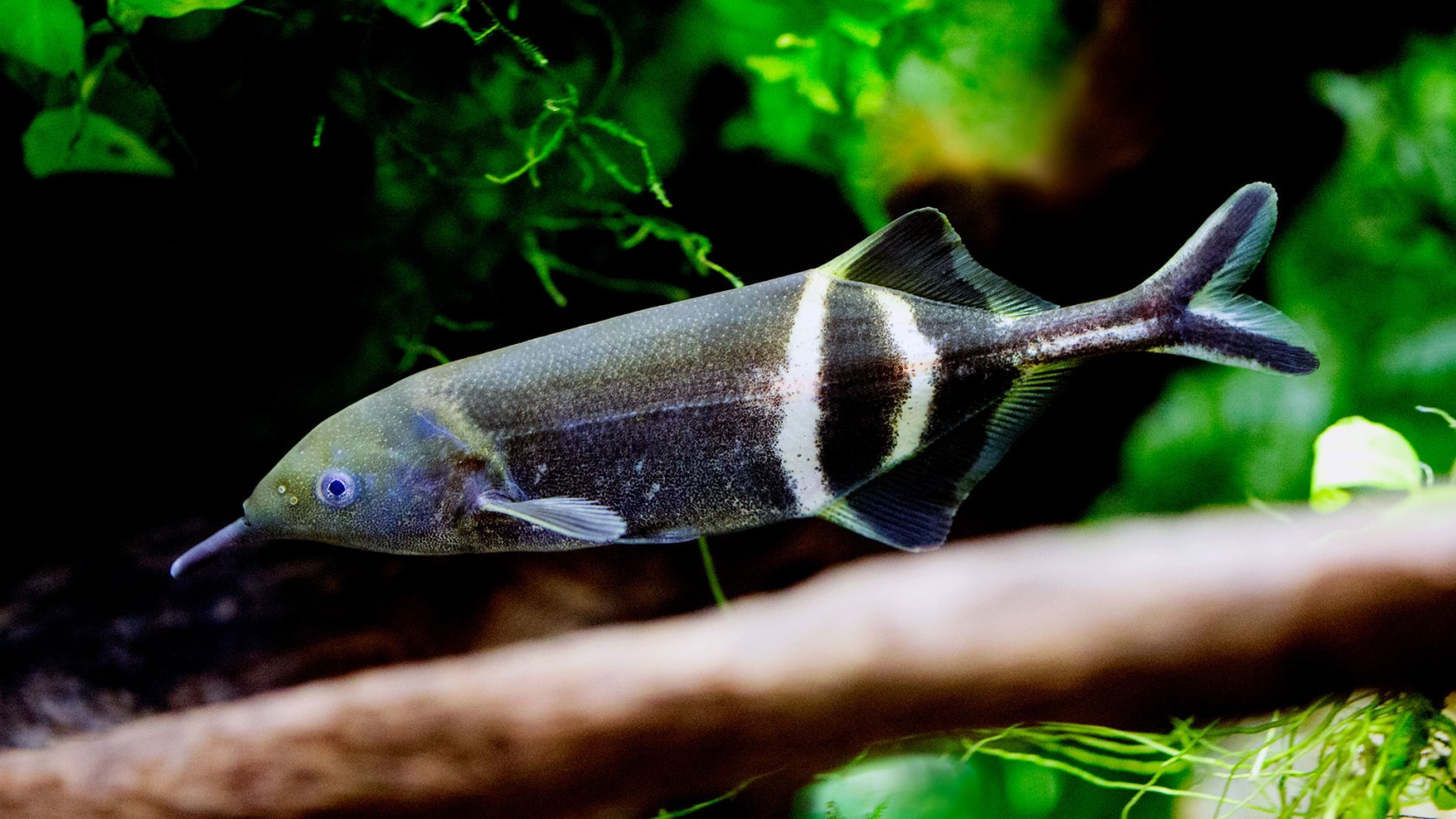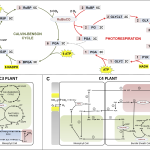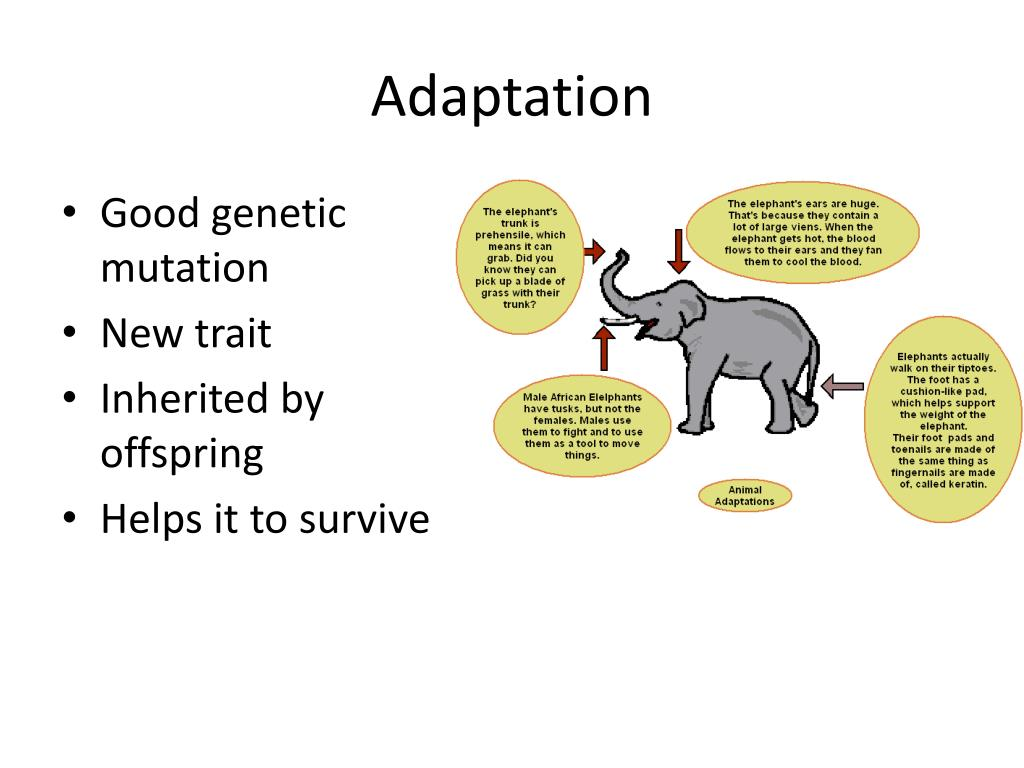Electric fish are captivating subjects for scientists exploring the groundbreaking field of NeuroAI. These unique creatures, especially the elephantnose fish, illuminate the complex dynamics of communication through their ability to generate and sense electric fields. By investigating how these electric fish exhibit collective intelligence—interactions among goal-driven entities—researchers are uncovering valuable insights into fish communication behaviors and the neurobiology of social interactions. This emerging understanding not only advances our knowledge of natural systems but also holds potential for enhancing artificial fish simulations that mimic these adaptive behaviors. Through such studies, we might develop AI systems that can cooperate more effectively, replicating the sophisticated social networks observed in nature.
Utilizing the fascinating capabilities of weakly electric fish, researchers are delving into novel dimensions of machine learning known as NeuroAI. These aquatic organisms, particularly the elephantnose fish, serve as a model for examining how simple communication can evolve into complex collective behaviors. By mimicking the communicative dynamics found in these species, scientists aim to unlock principles of social interaction applicable to both biological and artificial networks. Such an exploration not only enhances our understanding of fish communication but also informs the development of AI systems that can adapt and collaborate like communities observed in nature. This research extends into the realm of cooperative intelligence, laying the groundwork for artificial agents that could one day solve multifaceted challenges by emulating these natural social strategies.
Understanding Electric Fish Communication Behaviors
Electric fish, particularly the weakly electric species like the elephantnose fish, communicate by generating electric pulses. These pulses enable them to navigate their murky habitats, interact with one another, and even establish social hierarchies. Unlike typical auditory or visual communication, the electric signals emitted by these fish are a unique form of dialogue that allows a nuanced understanding of their surroundings. Researchers are leveraging these fascinating communication styles to delve deeper into the neurobiology of social interactions. By examining how these fish use electric organ discharges (EODs) for communication, scientists are uncovering insights into how collective intelligence might be structured in both biological and artificial entities, leading to implications for the development of NeuroAI systems that mimic such behaviors in machines.
The investigation into fish communication goes beyond simple signals and reveals a complex web of interactions that occur within schools of elephantnose fish. Each fish can emit distinct patterns of electric pulses that can convey different meanings based on frequency and rhythm. For instance, rapid signals can indicate excitement or aggression, while a slower pattern may signify calmness or cooperation. This layered communication style is akin to human languages, where tone and delivery carry significant meaning. Understanding these subtleties helps researchers model artificial fish simulations that can replicate these behaviors, paving the way for more advanced AI systems that can engage in human-like conversational dynamics and cooperative problem-solving. By studying the ways fish communicate, scientists are identifying fundamental principles of emergent behavior that could soon be applied to enhance artificial intelligence.
Implications of Collective Intelligence in AI Systems
Collective intelligence is a concept that can transform our understanding of how different entities interact within a given environment. Fish, particularly those that operate through electric communication, provide real-world examples of this phenomenon. In a schooling context, when one fish discovers food, it can communicate this finding effectively and mobilize the entire group towards the resource, showcasing a model of cooperative behavior. This observation is critical for the creation of AI systems that utilize similar principles of collective intelligence. By incorporating the mechanisms observed in fish communication behaviors, researchers can develop AI systems that collaborate more efficiently, sharing information and adapting to new challenges in real-time.
The exploration of how social dynamics emerge in groups of agents, human or artificial, is being informed by studies of electric fish. As trends in technology evolve, understanding the thresholds where cooperation transitions to competition within groups becomes essential. Research by Kanaka Rajan’s team indicates that environmental factors, such as food availability, can dictate whether AI systems should prioritize cooperation over competition. These insights can inform the design of intelligent systems that operate more like swarms or collective units, optimizing performance and adaptability. For example, AI systems that mimic collective intelligence could improve resource allocation in complex environments, enhancing everything from logistical operations to crisis management strategies. This exploration of cooperative AI promises exciting advancements in technology, heavily inspired by the social dynamics found in nature.
NeuroAI: Insights from Electric Fish
The field of NeuroAI explores the intersection between neuroscience and artificial intelligence, and electric fish provide a fascinating model for researchers. Studying the behavioral and communication patterns of these species offers crucial insights into the neurobiology of social interactions. For instance, the ability of electric fish to process and respond to electric fields exemplifies how sensory information can inform interactions among peers and influence collective decision-making. This knowledge can be translated into AI systems that model human-like decision-making processes, enhancing model performance in scenarios requiring interpersonal communication and cooperation.
Moreover, the study of electric fish lays the groundwork for further exploration into how different forms of intelligence can interact within a network of agents, whether biological or artificial. As researchers replicate the specific electric communication behaviors of these fish, they can develop advanced NeuroAI frameworks capable of emulating the dynamics of human social interactions. This could lead to AI systems that not only respond to stimuli but also anticipate the actions or needs of other agents in the environment. Such advancements underscore the potential of integrating natural intelligence principles into artificial systems, harnessing the cooperative strategies of elephantnose fish to inform the development of more robust AI ecosystems.
Emerging Strategies for AI Cooperation
As researchers study the cooperative behaviors in electric fish, they are uncovering strategies that could be applicable to AI systems. By analyzing how these fish engage in mutual aid during foraging, scientists are learning to incorporate similar cooperative algorithms into AI design, enabling machines to work collaboratively to solve problems. The emergent behaviors seen in schools of fish, where each member contributes to the group’s collective efforts without centralized control, serve as a model for decentralized AI systems. Such systems could operate effectively across various applications, from collaborative robotics to distributed computing frameworks.
The key takeaway from these findings is that cooperation in AI does not simply arise from programming individual agents to perform tasks; rather, it emerges from the nuanced interactions that occur when agents work together. The insights from electric fish highlight the importance of environmental factors in shaping cooperative behaviors. This underscores a significant shift in AI development—researchers are now focusing on how AI agents can learn from one another, adapt their strategies, and evolve through interactions, much like the adaptive communication strategies observed in nature. These developments open new avenues for creating intelligent systems that thrive on collaboration rather than competition.
Artificial Fish Simulations: A New Frontier
The innovative research surrounding electric fish and their communication patterns has catalyzed the creation of artificial fish simulations. These simulations not only allow researchers to study the dynamics of collective intelligence in more controlled environments but also serve as a sandbox for testing new AI algorithms. By creating virtual models that mimic the behaviors of electric fish, scientists can manipulate various factors to understand how changes affect cooperative behaviors and communication efficacy. This process provides valuable data that can be transferred back to real-world applications, enhancing the way AI systems are designed to mimic biological interactions.
Furthermore, these artificial fish simulations can inform how teams of AI agents might cooperate and communicate in complex problem-solving scenarios. Just as elephantnose fish use their electric pulses to share information about food sources, AI systems can be engineered to communicate effectively with one another while pursuing common goals. These simulations facilitate learning towards developing adaptive algorithms that improve efficiency and performance through simulated interaction phases. As a result, researchers are optimistic that such artificial fish models will yield significant insights into the future of AI cooperation.
The Future of AI and Collective Intelligence
The ongoing research into electric fish is paving the way for exciting developments in the realm of AI and collective intelligence. By leveraging the inherent cooperative behaviors observed in natural species, AI researchers can design systems that emulate these successful strategies in various contexts. The exploration of how electric fish communicate and work together to navigate their environment presents a promising avenue for enhancing AI capabilities. As AI systems become increasingly integral to daily life, understanding the social dynamics reflected in nature will inform the design of smarter, more adaptable technologies.
Moreover, as researchers begin to unravel the complexities of collective intelligence, there is potential for applying these findings to diverse fields such as robotics, autonomous systems, and even social media algorithms. Harnessing the principles of cooperative behavior seen in electric fish could lead not only to improved technological advancements but also to fostering better interactions within human-centric AI systems. In essence, the future of AI development stands to benefit enormously from the lessons learned from studying the natural world, highlighting the importance of interdisciplinary collaboration in achieving breakthroughs in artificial intelligence.
Neuroscience and AI: Bridging the Gap
The intersection of neuroscience and artificial intelligence is an area ripe for exploration, and electric fish research exemplifies how biological studies can inform AI development. Understanding the neural mechanisms underlying communication and social interaction in these fish provides critical insights that can be translated into algorithms for AI systems. By delving into the neurobiology of social interactions, researchers are beginning to bridge the gap between artificial and natural intelligence, developing systems grounded in biological principles. This approach offers opportunities to create AI that is more aligned with human cognitive processes.
Additionally, as scientists unlock the complex neural pathways that facilitate communication among electric fish, they generate frameworks that can be applied to develop smarter AI systems capable of collaborative engagement. The potential to replicate the intricate dynamics of electric fish communication means that AI can learn to adapt and thrive in social environments, leading to innovations in areas like machine learning and human-computer interactions. This synergy between neuroscience and AI opens up new horizons for understanding and designing advanced intelligent systems in the future.
Optimizing AI Systems for Complex Environments
The research on collective intelligence derived from studying electric fish not only informs the development of NeuroAI but also has significant implications for optimizing AI systems in complex environments. As artificial fish simulations reveal the dynamics of cooperation and competition under various scenarios, researchers are gaining insights into how to structure AI systems that can adapt to changing conditions. The lessons drawn from the behaviors of electric fish provide a roadmap for creating AI that is robust, flexible, and capable of thriving amidst unpredictability.
Such optimizations extend beyond mere efficiency; they encompass emotional and social intelligence as well. By understanding how electric fish navigate their social contexts through electric signals, programmers can craft AI systems that prioritize collaboration and adaptability. The interplay of these advanced systems may lead to innovative developments that further integrate AI into social frameworks, enhancing their capabilities across domains such as healthcare, environmental management, and community-building. Ultimately, optimizing AI with principles drawn from the collective behaviors of electric fish promises to redefine interactions between humans and machines, leading to a future of synergistic coexistence.
Frequently Asked Questions
What insights do electric fish provide for understanding NeuroAI?
Electric fish, like the elephantnose fish, offer valuable insights into NeuroAI by showcasing how collective intelligence emerges from interactions among goal-oriented agents. Their unique communication through electric pulses can help model AI systems that replicate similar social dynamics.
How do elephantnose fish exemplify collective intelligence in NeuroAI research?
Elephantnose fish, with their ability to communicate through electric organ discharges, exemplify collective intelligence by demonstrating coordinated behaviors. Their interactions, such as following a leader to find food, are crucial for studying cooperative strategies in NeuroAI.
What role does fish communication behavior play in developing AI systems?
Fish communication behaviors, particularly in weakly electric fish like the elephantnose fish, play a significant role in developing AI systems. By modeling these interactions, researchers can create AI environments that simulate social dynamics and enhance cooperation and competition among artificial agents.
How does neurobiology of social interactions in electric fish influence AI systems cooperation?
The neurobiology of social interactions in electric fish, such as their electric pulse communication, influences AI systems cooperation by providing models of how individuals can cooperatively interact. This research can lead to better understanding of cooperative behaviors in AI swarms and enhance collaborative problem-solving capabilities.
What can we learn about artificial fish simulations in the context of NeuroAI?
Artificial fish simulations help researchers understand the principles of collective intelligence by replicating the behaviors of electric fish. These simulations allow for experimentation with interaction patterns and communication strategies, which can inform the development of more adaptive and resilient AI systems.
Why are electric fish important for studying multi-agent intelligence in AI?
Electric fish are important for studying multi-agent intelligence because their simple yet effective communication and collective behaviors provide a foundational model for understanding how multiple agents can interact, cooperate, and compete, key components in shaping advanced AI systems.
How do electric fish contribute to our understanding of social dynamics in AI research?
Electric fish contribute to our understanding of social dynamics in AI research by highlighting how individual behaviors combine to create complex group dynamics. Their electric communication patterns can be modeled to explore how AI systems might develop emergent cooperation and communication behaviors.
Can studying electric fish lead to advancements in AI swarm technology?
Yes, studying electric fish can lead to advancements in AI swarm technology by providing insights into how cooperative behaviors emerge in nature. These findings can inform the design of AI systems that function effectively in swarms, enhancing their adaptability and problem-solving capabilities.
| Key Point | Details |
|---|---|
| Electric Fish’s Sensing Ability | Electric fish generate and sense electric fields, allowing them to navigate and communicate in murky waters. |
| Collective Intelligence | Study of electric fish provides insights into social dynamics and collective intelligence among agents. |
| Modeling Fish Behavior | Research simulates fish behaviors using AI to understand communication and cooperation dynamics. |
| Emergent Communication | Electric fish exhibit coordinated behaviors that reflect collective decision-making processes. |
| Implications for AI Development | Insights gained may inform the development of AI that mimics such cooperative and competitive interactions. |
| Evolutionary Simulations | Artificial agents show varying behaviors based on food availability, influencing competition and cooperation. |
| Social Interaction Principles | Research seeks to uncover universal laws governing interactions among agents. |
| Future Research Directions | Aim to analyze the learning processes and survival strategies in more complex models. |
Summary
Electric fish NeuroAI emphasizes the significance of studying weakly electric fish to unravel the complexities of collective intelligence. By exploring how these creatures communicate through electric pulses, researchers like Kanaka Rajan are gaining insights into both biological and artificial systems. This research elucidates the dynamics of agent interactions, informing the development of advanced AI systems capable of adaptive problem-solving through cooperative engagement. As we deepen our understanding, the implications for both ecology and technology will be profound, reshaping our approaches to social interactions in AI and beyond.




